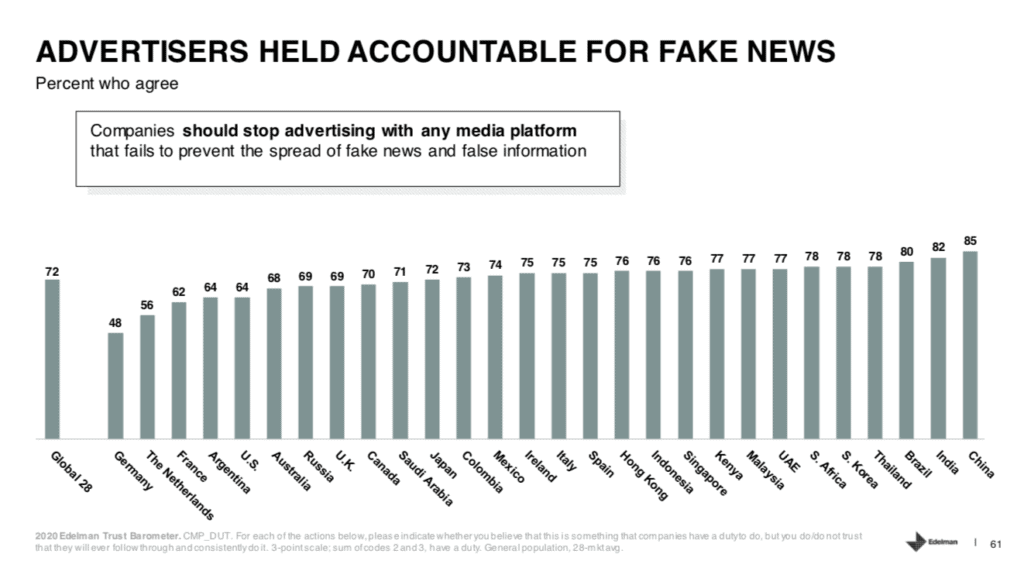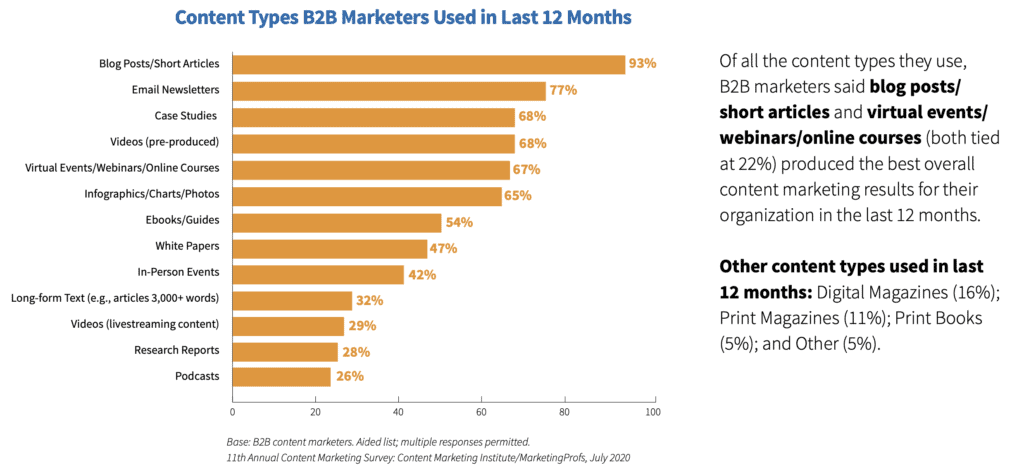
“How can content marketing change in the age of social media?”
Can content marketing change in the age of social media?
A marketer from the American Automobile Association (AAA) asked this question, one of the Top 100 Questions on content marketing.
Four key trends will drive the future of social media and content marketing:
1. Usage is up: Americans are using social media more during the COVID-19 crisis. About half are consuming even more content.
2. Trust is down: But trust in social media is strained, due to fake news and fake accounts.
3. Dependency brings dangers: Marketers absolutely depend on social media today as their #1 content marketing channel, both organic and paid.
4. Have we reached social media’s peak? As engagement declines, marketers may need to wean themselves off social media to focus on owned and earned media.
People use social media more, but doubt it’s trustworthy
During the pandemic between 46% and 51% of Americans are consuming more social media content, the Harris Poll found. But not all is well in social-media land.
The 2020 Edelman Trust Barometer shows that people consider social media the least trustworthy of 4 media types.
More than 3 out of 5 people (61%) trust traditional media and search engines. But only 2 out of 5 (40%) trust social media, which trails owned media at 46%.
Here’s how social media compares with other media, Edelman says:

Why? Because users are worried about privacy and what social media does with their personal data. Facebook already knows more about your personality than your family and friends, says a study by University of Cambridge and Stanford University researchers.
Savvy users realize that social media is used to spread fake facts through fake accounts from fake people. Edelman found a particular risk for marketers – that people will hold advertisers responsible for the fake news that appears in the media near their ads.
Globally, about 3 out of 4 people (72%) hold advertisers responsible for fake information in the media. In the U.S., about 2 out of 3 people (69%) hold advertisers responsible.

Social media is losing steam.
Traffic, engagement and shares of social media posts are falling. Here is Neil Patel’s view of declining social media impact.

Christopher S. Penn of Trust Insights studied almost half a million Facebook posts and found low, low engagement:
- 2,307 brands published 486,035 Facebook posts
- Median engagement on 478,743 organic (unpaid) posts was 26 people out of 100,000
- Median engagement on 7,292 paid posts was about half the engagement on organic media, or 15 people out of 100,000.
Penn used artificial intelligence (AI) to analyze Google searches about social media. He found that more people intend to quit than join social media, based on their searches.
How can content marketing change in the age of social media?
More people are searching for how to quit Instagram, Facebook, Snapchat, TikTok, Reddit, LinkedIn, Twitter, Telegram, and Pinterest than how to join these platforms. But a few, including YouTube and Twitch, stand to gain future subscribers.
Here are the net changes to social media as forecast by users’ Google searches:

The upshot? Marketers must prepare for the decline of social media
To do so:
- Monitor the editorial environments of social media closely. Pull out of media that do not control the spread of fake accounts and information.
- Focus your content marketing efforts on owned media, then earned media, and lastly on paid media. Here’s why.
- Emphasize creating owned content marketing assets such as your content base. These assets hold lasting value, which paid media does not.
That said, today social media still plays the leading role in content distribution.
Social media rules the roost today in content marketing

The latest Content Marketing Institute studies confirm that social media platforms are the #1 distribution channel for content marketing:
- Social media is the #1 organic distribution channel for B2B marketers, used by 89%, edging out email at 87% and websites/blogs at 86%.
- For organic distribution, 96% of B2B marketers use LinkedIn. More than 4 out of 5 marketers (82%) use Twitter and Facebook. And 62% use YouTube, while 49% use Instagram.
- About 3 out of 4 B2B marketers (72%) use paid distribution. Among them, 83% chose paid social media as their leading paid channel.
Findings for B2C marketers from the Content Marketing Institute 2020 study are similar:
- Social media is the #1 organic distribution channel for B2C marketers, used by 93%, ahead of websites/blogs at 85% and email at 79%.
- For organic distribution, 96% of B2C marketers use Facebook. And 74% use Instagram, 71% use Twitter, 62% use YouTube and 61% use LinkedIn. Other social channels are used by less than 30% of marketers.
- Most B2C marketers (85%) use paid distribution. The #1 paid distribution channel is social media ads, used by 89% of marketers – followed by 68% who use pay per click ads and 50% who use banner ads to promote content.
What does all of this back and forth mean? You have a balancing act to perform in the years ahead:
- Keep social media going while closely inspecting the editorial environment and measuring performance.
- Add more owned and earned content (vs. paid or rented content) into your media mix.
- Make sure all your paid and earned content point to owned content on your website, and in your blogs, email newsletters, and magazines.
- Prepare contingency plans for the decline of social media.
“How can content marketing change in the age of social media?” is one of marketers’ Top 100 Questions on content marketing. Here are the answers.


